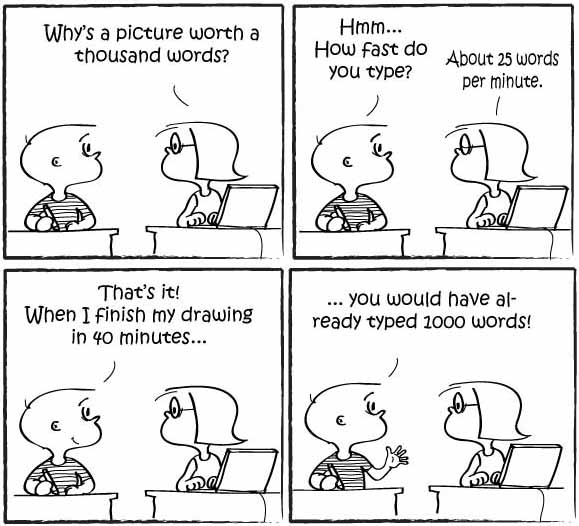History
The 19th Century, Participation, and Me
Old News
Beethoven vs. Lil Wayne
Revolutions
Notes on Marx
More Marx: The Communist Manifesto
Picking my top blog posts for each section was difficult considering this is my 30th blog post for this class and I really strived to take a strong stance with each post. In the end, these are the best posts that highlight my historical learnings from this class. I started out strong with an introductory blog post discussing the 19th century and the digital concept of participation. Ariel actually gave a shout-out to my post as a great example of an introductory blog post. A class discussion on Copernicus led me to linking his "discovery" to the Book of Mormon. I compared Beethoven and Lil Wayne after a class discussion on music and how it has changed. I talked about past revolutions and modern revolutions. But my absolute favorite was my study on Marx. I really tried to dive in on Karl Marx and Marxism, and I was fascinated with what I found. There are a lot of things that have a hint of goodness and truth, and a lot of hypocritical things in Marx's life. I could have talked about Marx for days, but I had to try to sum up my most important learnings in two posts.
I had more posts with historical links, but these where the highlights. Connecting history and modern issues is extremely important, for it is crucial that we learn from our past instead of making the same mistakes over and over again, and this class has definitely helped me do that. In fact, pulling historical examples and patterns into discussions on modern topics has become second nature, like comparing the patent stockpiling to the Cold War or the inability of the US government to reform the patent system anytime soon just like it's unable to pay off its national debt anytime soon. Bringing in historical examples gives so much more depth and strength to arguments.
Core Concepts
Steve Jobs
Control: A Judge's Order
Open Crowd Sourcing Fail.
Presentations Done Right.
Continuing to Innovate.
Bringing it all together.
Fifth Amendment for Encrypted Hard Drives
I definitely had fun with the core concepts. As a computer science major and an avid fan of technology, this was my territory. One of my favorites was the recap I gave of the Steve Jobs biography. I appreciated its honesty and open criticism of Steve, as well as the recognition of the way he got things done and revolutionized seven different markets in his lifetime.
I also loved discussing the issues of encrypted hard drives and the Fifth Amendment that were making the news. In fact, the Control group basically presented on my blog posts, and I'm not even in the Control group!
My most popular post in terms of views was my Presentations Done Right post. This was written 10 days after Dr. Burton's post on Making Killer Presentations. I felt the general feeling of the class was that slide-based presentations were of the devil, and though slide-based presentations can be so bad they actually might be of the devil (just kidding), there is actually a right way to use slides to support your argument. I drew upon my time at Apple where I learned a lot about giving presentations, giving one presentation to Apple's CIO and another in Apple's Town Hall where Steve Jobs had presented on numerous occasions. I know I struggled a bit during class rehearsals before the final event, but this was mostly due to a lack of time spent preparing and practicing with my group as other classes with more relevancy to my future as a computer scientist and deadlines closer at hand took precedence. The biggest indication I have that I wasn't just blowing steam was the final event where I really feel Gabe and I knocked our presentation out of the park. We showed passion, told a story, made bold claims and gave a call to action! It was a fantastic event, and our hard work and practice paid off.
Digital Literacy
Consume. I always strived to remain up to speed with current events, especially those relating to our digital concepts and my eBook chapter on Intellectual Property. I even got a shout-out by Hwanhi Chung as "a great, consistent source for the latest news" which was awesome! I would share links to important stories via Google+, and wrote about the ones I was most passionate about like encrypted hard drives and the fifth amendment, and Andy Baio and Yahoo weaponizing his work. Of course, I consumed way more than I shared, filtering out the most relevant things to our class that I was the most passionate about.
Create. This is my 30th blog post on this blog. If I copy and pasted my posts into a normal, single-spaced, size 12 font document, I estimate my posts would come out to something like 60 pages of content. I'm pretty proud, because that's quite a lot to write for one class in one semester. I also shared several links on Google+, and participated in various discussions with class members via Google+.
I also wrote a lot of content related to our eBook chapter, forming the foundation of the chapter and was probably the biggest single contributor to our chapter on Intellectual Property in terms of the amount of content written as well as remained in use in our chapter. I was responsible for synthesizing our presentation into a final form I could feel proud speaking in front of, and I got to use my favorite presentation program Keynote to do the trick.
Connect. I was really excited about my outcomes for this section. Before this class, I was more of a silent digital citizen, always consuming but not actively participating or connecting with others. But this class taught us to dream big and reach out to the thought leaders in our respective areas of study. I decided to take the challenge to heart. After reading Andy Baio's article on Yahoo weaponizing his work, I was really impressed with his writing and decided to reach out to him. Andy writes a weekly column for Wired, which is kind of a big deal, so I wasn't sure if he'd give me the time of day. Still, I tracked down his email and sent him a message describing our class, our final event, and our chapter of the eBook. I even sent him a link to our Google Doc with our final draft we were working on. One day in class, I opened up the document to see a note from Andy! He had read at least part of our chapter, and caught and embarrassing factual error. He left a comment to help set us straight, and he even corrected a typo we had. I would have loved to have more feedback from him, such as his feelings on our position statements, but this guy writes for Wired! I'll take what I can get!
Another awesome experience I had was on Google+. I decided to track down some other experts who write about Intellectual Property when I came across Gina Smith. She is a tech writer who writes about a lot of things in the tech world, with a recent story on tech vendors funding patent trolls. I read her story, shared it on Google+, and then tried to reach out to her to invite her to our event. Unfortunately, she didn't respond, but she did add me to one of her circles! I just hope it wasn't the "Crazy College Kids - Ignore" circle.
Other than my two small incidents with some pretty big tech writers, I did my best to make my positions public on Google+, and to talk about what I was writing about with my peers. A few of my peers outside of this class commented on my posts, and one was even the inspiration behind my whole position on the patent system! I tried to do all I could to connect my writings to real people who cared, and the small successes I saw were an inspiration to keep reaching out.
Self-Directed Learning
Burned out yet? That's what you get for giving us five sections to report on, and challenging us to strive for rewarding experiences we get excited about and blabber on about in our last post! I honestly strived to take my learning where I was most interested. I didn't wait around for people to tell me what to study or write about; I found the things that interested me, the things that connected in my mind, and I shared them. I think my reaching out to tech writers Andy Baio and Gina Smith is a great example. I hunted these people down, I found out how to contact them, and I reached out to them the best way I knew how. I really made the most of my semester in Digital Civilization, and I loved it.
Collaboration
My experience as a group leader for the Intellectual Property group was honestly a bit challenging. I was so busy with other classes and work, and so were the rest of the members of my group. Two of them had scheduling conflicts that made it impossible to be there for our final event. Coordinating everybody's writing into a single cohesive chapter with a common theme was a real challenge, but I think we did it. We all did some research and writing about stuff that didn't make it into our chapter, but in the end it was for the better. My other group projects were a success as well: my 19th century group had a lot of fun using the idea of voting as a theme for our group, and I got to suggest the voting activity in the beginning that led to our common theme. Our Participation group was also fun, as we discussed the various aspects of crowd sourcing, wise crowds, and crowd decision making. Collaborating in so many different groups on substantial projects was challenging, but it was fun, especially as we leveraged digital tools to get the job done.
TL;DR (Too Long; Didn't Read)
It's been a blast. I learned a ton, I produced a ton, my IP group hit it out of the park at our final event, I connected in some small way to tech writers Andy Baio and Gina Smith, and I finally came out of my shell. Look out digital world, here I come!



































